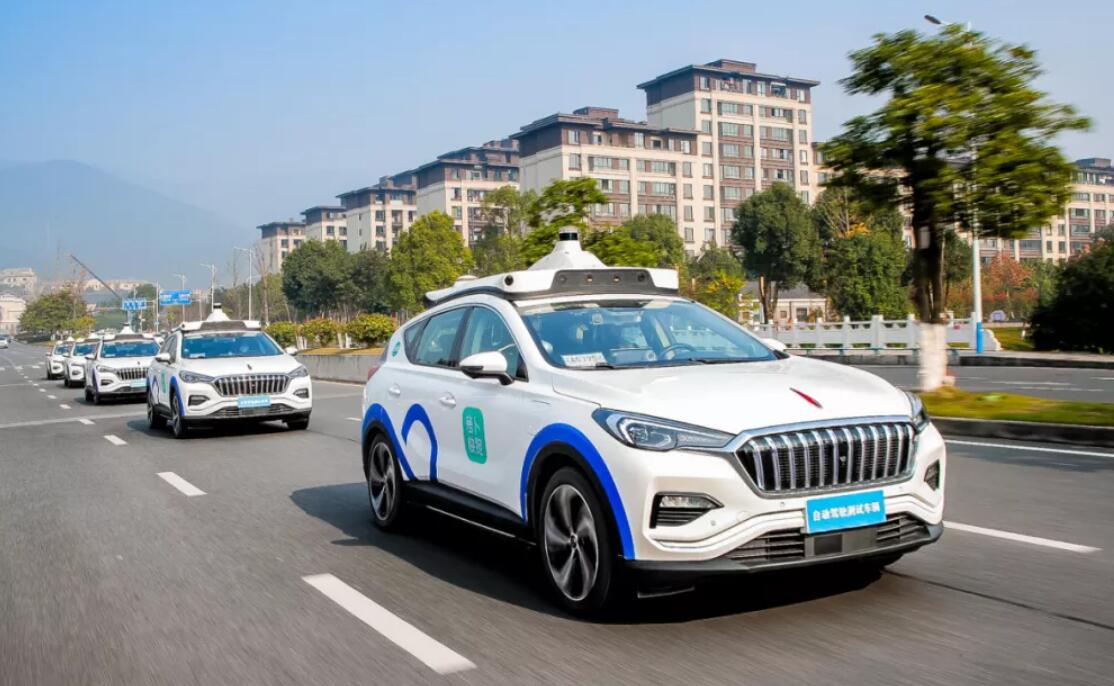CITIC Securities sees potential market space of about $500 billion for Robotaxis in China
Robotaxi has the largest market space in autonomous driving application scenarios and is also the most challenging in terms of L4 autonomous driving technology, according to CITIC Securities.

(Image credit: Baidu Apollo)
Although the development of autonomous driving technology has not been smooth, this has not stopped analysts from envisioning a huge potential market space.
The potential market space for autonomous driving technology in China is in the RMB trillions, and it has the largest space in open urban scenarios, says CITIC Securities in a research note released today.
High-level autonomous driving capabilities can effectively address issues including rising labor costs, traffic safety, and driver shortages, the note said.
The current use scenarios for autonomous driving products are mainly urban open scenarios, highways and closed scenarios, where urban scenarios include Robotaxis, sanitation services, and delivery services, highway scenarios include trunk line transportation, and closed scenarios mainly include ports and mining areas.
Based on the 2040 forward space calculation, the potential market for Robotaxi is about RMB 3.2 trillion ($500 billion), according to CITIC Securities.
The combined market space for other self-driving commercial vehicles is about RMB 3 trillion, with about RMB 1.9 trillion for self-driving city-specific vehicles, RMB 900 billion for highway scenarios and RMB 100 billion for closed scenarios, the team said.
Robotaxi is one of the largest market spaces in the autonomous driving application scenario, and also the most test of manufacturers' L4 autonomous driving technology level.
The current development of Robotaxi is to a certain extent facing the problems of relatively restricted open road sections and difficulty in reaching the 11-billion-mile test threshold, according to the team.
The time and capital costs required to obtain sufficient data by increasing the number of fleets would be too large, the team said.
While autonomous driving in urban scenarios is highly similar to the Robotaxi scenario and faces similar corner cases, their pioneering use is expected to expand their data and algorithms to the Robotaxi scenario, adding ammunition for Robotaxi's algorithm optimization, they said.
CITIC Securities believes that the application scenarios for city-specific self-driving vehicles include sanitation, cross-city delivery, and end-of-pipe unmanned delivery, which face more similar road conditions environments.
In addition, self-driving vehicles in the city-specific scenario are expected to generate stable cash flow, which can alleviate self-driving companies' reliance on ongoing external financing, the team said.
China already has a number of passenger car makers as well as self-driving startups involved in or planning to launch Robotaxi businesses.
Late last month, Xpeng said in a conference call after announcing its third-quarter financial results that it would explore the Robotaxi business in the second half of 2022 to accelerate the commercialization of smart driving technology.
Xpeng's strategic goal is to improve the robustness and safety of autonomous driving algorithms in the short term by operating in generalized scenarios, the company said.
The company believes it can create significant business value by bringing a revolutionary experience to user travel through its ability to mass-produce front-loading Robotaxi software and hardware, as well as through future partnerships with various mobility operators.
Last week, SAIC Mobility, the mobility services platform of Chinese automotive giant SAIC, became the latest player in the space when it built the first Robotaxis with L4 autonomous driving using technology from autonomous driving unicorn Momenta.
The first 20 Robotaxis, based on SAIC's Rising Auto-branded Marvel R electric SUV, were put into trial operation today in Shanghai's Jiading district.
Chinese tech giant Baidu unveiled the Apollo Moon-based Robotaxi with GAC Aion on October 26 to accelerate the commercialization of its self-driving technology. This is the third model Baidu has developed in partnership with car companies since the Apollo Moon was announced in June.
In addition, self-driving startups, including WeRide and Pony.ai, are also building Robotaxis.
Deutsche Bank says robotaxi could unlock material optionality for XPeng stock

